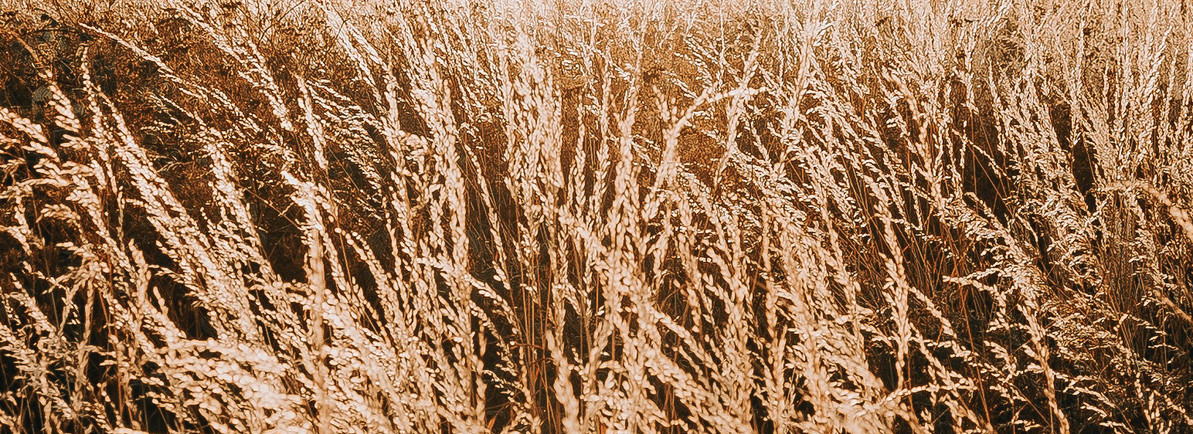The Hay Curing Process

When preparing to bale hay, the transition from freshly cut, high-moisture grasses and legumes to dry forage is known as curing. This process takes on average 3 days—in good weather. While some of the factors involved in the curing process like weather can be out of your control, there are many steps you can take to ensure properly cured, high quality hay while even reducing drying time.

The first step to speeding up curing time begins with mowing. Since sunshine is a hay producer’s best friend, choosing a mower that spreads the forage as it cuts is helpful. This exposes more of the windrow to sunlight rather than piling it. While drum mowers can be a preferred mower for durability and fast cutting speeds, they do tend to create a thicker, narrower swath.
Disc mowers and sickle bar mowers are a little better about spreading the hay. There are some drum mowers however that come with conditioning systems that scatter the hay as they cut. This might be a beneficial purchase in areas with high humidity and/or poor drying conditions.
In most cases, the swath created by any type of mower will require further spreading. This can be achieved by using a tedder. This implement inverts, stirs, and spreads out the crop. A tedder is also a handy tool for aerating hay after a surprise rain shower. However, as discussed in an earlier blog, a tedder should not be used when hay is overly dry. Doing so causes leaf shatter and material loss, resulting in reduced nutritional value.
Large-scale commercial hay producers will often invest in a hay conditioner. This machine crimps and crushes the crop to promote faster drying. However, a separate hay conditioner is not an economical tool to own for all but the largest hay producers. A tedder can achieve many of the same results without the hefty price tag.
As a rule, properly cured hay produces small bales with no more than 18-20% moisture, large bales no more than 16-18%. Moisture levels can be easily tested with a moisture reader that is specifically designed for testing hay. Hay can be tested in the windrow before baling by densely packing hay into a 5- to 10-gallon bucket and then measuring it with the moisture probe. This should be done in several areas of the field. Hay should not be baled until the highest moisture reading is below desired levels.
For those doing smaller baling jobs who don’t want to invest in a moisture reader, there are a few acceptable though somewhat less reliable techniques for determining if hay is dry enough to bale. One way is to find the thickest part of the field and flip the hay in the windrow over by hand. If the hay underneath is green and/or at all moist to the touch, more drying time is needed.
Another trick is to give various samples throughout the field (paying attention to the undersides of windrows) the quick “twist test”. To do this, simply grab a fistful of hay and twist it with a circular motion. If the stems break easily, the hay is cured. If it bends, it is not. Also, hay that is dry enough to bale should sound like crumpling paper when handled. The caveat with these methods though is that by the time they work, the hay may be overly cured. When your hay is close to being ready, frequent testing is required to prevent over-dry hay, which will be dusty and lower in nutritional value. Sometimes even a few hours can make a difference.
In conclusion, the process to properly curing hay begins with mowing in wide, sun-exposing swaths and continues with various methods to speed drying without compromising hay quality or causing excessive material loss. Time and experience baling make it easier to use these methods to their advantage.
Resources
https://fyi.extension.wisc.edu/forage/effectivenes...
https://tractortoolsdirect.com/preventing-hay-fire...
https://www.drovers.com/article/expert-offers-tips...
https://www.farmprogress.com/livestock/5-steps-bet...
http://www.omafra.gov.on.ca/english/crops/field/fo...
Recent Posts
-
Haying Independence
In this month’s blog, let’s take a deeper look at the foundation of what we here at Tractor To …Apr 1st 2024 -
Be On the Cutting Edge of Modern Market Gardening Using Raised Bed Systems: FULL-TILL, MINIMUM-TILL, and NO-TILL
Market gardening is the production of vegetables, fruits, flowers and other plants on a scale larger …Mar 1st 2024 -
No Loader? No Problem.
So you have a compact tractor on your small farm, but you don’t have a front loader. Maybe price put …Feb 1st 2024




